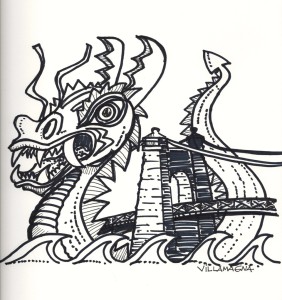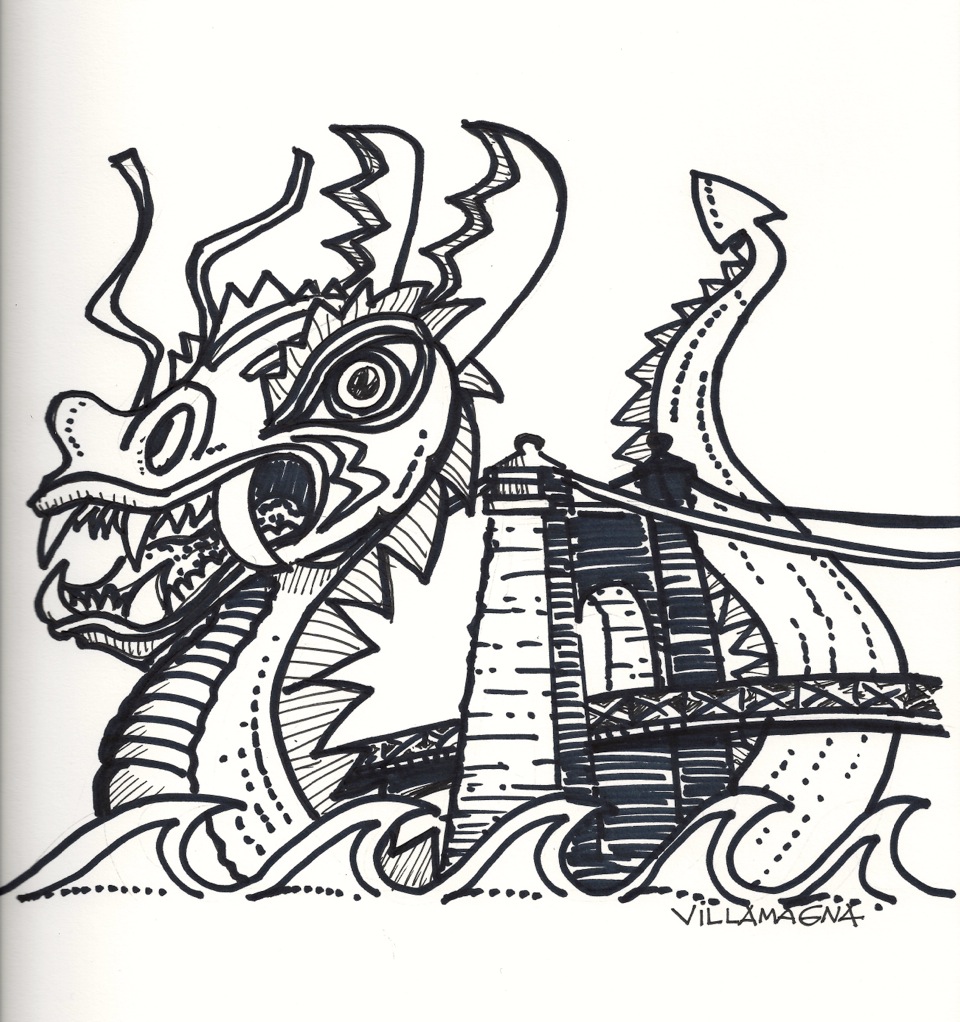Ultimate Team Sport
“It’s the ride of your life.” ~ Emily Breeding, long-time dragon boat paddler in Chattanooga
Once you hear about dragon boat racing and become involved in this world of sport, community, and fun, there is no turning back from it. There is much more to it than a great day on the water. There are different and interesting ways to experience the sport for both team members and spectators. Whether you’ve paddled in a festival or regatta, or you paddle regularly in a dragon boat, you feel connected to it. That’s the beauty of it – from the moment you pick up a paddle, you’ll love dragon boat racing!
Traditional Hong Kong style dragon boats are 46-feet long, with 10 seats and 20 people. A drum seat in front of the first two paddlers (seated beside each other) holds a drummer – you want the smallest, loudest, most rhythmic person you can find. A steerer guides the boat with the steering oar in back. These 22 people make up a dragon boat team. The stroke is unlike any other (the most similar is outrigger canoe) and taught in practice.
 With origins dating back 2,300 years, dragon boat racing is the most fun, unique cultural event featuring adrenaline-pumping action. Teams rave about the excitement, friendly competition and community spirit surrounding the sport. All ages, skill levels and physiques perfect their stroke and timing for the ultimate teamwork experience!
With origins dating back 2,300 years, dragon boat racing is the most fun, unique cultural event featuring adrenaline-pumping action. Teams rave about the excitement, friendly competition and community spirit surrounding the sport. All ages, skill levels and physiques perfect their stroke and timing for the ultimate teamwork experience!
Every paddler plays a specific role. They sit next to each other, and against the gunnel to balance the boat as they paddle. The strokers occupy the front three seats of the boat, while the fourth seat is a transition place where, ideally, the paddlers have rhythm and power. Then, seats four, five, and six consist of the “engine room,” where the largest and strongest team members sit. The last four rows of a dragon boat are filled with strong paddlers who are also typically shorter and able to paddle faster. Paddlers at this location in the dragon boat are considered “rockets,” because the water is moving faster to them, from the first 14 seats since they’re scooping water back. The paddlers are taught to watch up the middle of the boat and two seats across – when that paddler has his or her paddle up in the air, ready to engage the water, it’s the cue for the person watching to get his or her paddle up, as well. While the drummer plays keeps the rhythm for most of the boat, it can be difficult to hear on race day. It’s also a very visual sport, and if everyone is watching the right person, magic absolutely can happen in a dragon boat. Teams have to follow the strategy, and then execute: the team members in the front must paddle in perfect timing as an example for the back half of the boat. When the power from the middle is mixed with the speed and capabilities of the athletes in the back, a dragon boat can glide quickly through the water like a bullet.
Teams feel a connection to the racing. They feel connected to the experience.
What is the catch?
Besides the catch actually being a step in the stroke technique, dragon boat participants are passionate about this sport. People love it – the thrill, the teamwork, the adrenaline, the interaction in the boat – everything. People are drawn to this sport, to each other in a setting that exemplifies human connectivity on a level comparable to nothing else. What happens in a dragon boat, stays in the dragon boat. People who never thought of themselves as athletes can thrive in a dragon boat. People who are athletes discover a challenging alternative to general sports.


